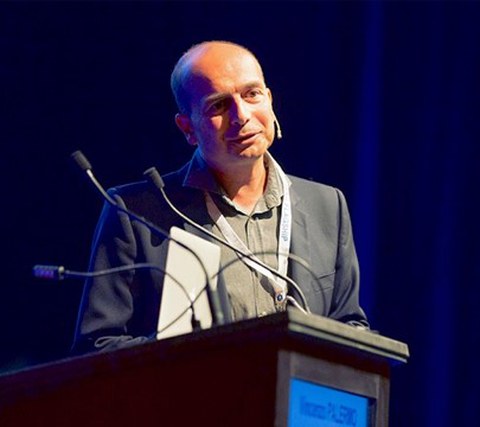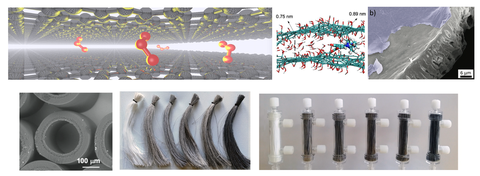Vincenzo Palermo
Title: Graphene oxide-polymer composites for water purification. From key concepts to application in real environment
First and last name: Vincenzo PALERMO
Affiliation: National Research Council of Italy (CNR)
Short Biography:
Vincenzo Palermo is the director of the Institute for Organic Synthesis and Photoreactivity (ISOF) of the National Research Council of Italy, and associated professor of Chalmers University of Technology (Sweden). He uses nanotechnology and supramolecular chemistry to create new materials for aerospace, environmental and biomedical applications. He published >190 scientific articles on international journals in chemistry, nanotechnology and materials science (>8000 citations, h-index >52), collaborating with key industrial partners in Europe (Airbus, FIAT, Leonardo, BASF, Nokia, STMicroelectronics etc.).
He had been vice-director, leader of WP on Dissemination and leader of WP on Composites of the Graphene Flagship, one of the largest research projects ever launched in Europe. He won the Lecturer Award for Excellence of the Federation of European Materials Societies (FEMS), the Research Award of the Italian Society of Chemistry (SCI) and the Science dissemination awards of the Italian Book Association.
Abstract:
I will describe the production and testing of novel composites where 2D materials, and in particular Graphene Oxide (GO), are combined with commercial filters to remove water contaminants like pesticides, drugs, perfluoroalkyl substances (PFAS) and metal ions. The tunable surface chemistry of GO allows to process these composites by extrusion, coating or filtration, to stabilize them using temperature or microwaves, to enhance their ability to capture contaminants thanks to selective intercalation, electrostatic interactions or π-π stacking. We characterized such composites from atomic scale to complete filter devices using a combination of computational and experimental techniques, in collaboration with different industrial partners of the Graphene Flagship; we also compared their performance with state-of-the-art technology (activated carbon), showing more efficient and faster removal of some of the most challenging contaminants. This technology, developed in the last seven years, is currently used for large-scale production of graphene-enhanced filters in a pilot plant of one of our industrial partners, and tested in a water purification plant on the Po river, the largest river in Italy.
- S. Khaliha et al., Defective graphene nanosheets for drinking water purification: Adsorption mechanism, performance, and recovery. Flatchem 29, # 100283 (2021).
- A. Kovtun et al., Core-shell graphene oxide-polymer hollow fibers as water filters with enhanced performance and selectivity. Faraday Discussions 227, 274-290 (2021).
- A. Kovtun et al., Graphene oxide-polysulfone filters for tap water purification, obtained by fast microwave oven treatment. Nanoscale 11, 22780-22787 (2019).
- S. Mantovani et al., Scalable synthesis and purification of functionalized graphene nanosheets for water remediation. Chemical Communications 57, 3765-3768 (2021).
- S. Mantovani et al., Facile high-yield synthesis and purification of lysine-modified graphene oxide for enhanced drinking water purification. Chemical Communications 58, 9766-9769 (2022).
- S. Mantovani et al., Amino acid-driven adsorption of emerging contaminants in water by modified graphene oxide nanosheets. Environmental Science-Water Research & Technology 9, 1030-1040 (2023).
- T. Posati et al., Polydopamine Nanoparticle-Coated Polysulfone Porous Granules as Adsorbents for Water Remediation. Acs Omega 4, 4839-4847 (2019).
- F. Tunioli et al., Adsorption of emerging contaminants by graphene related materials and their alginate composite hydrogels. Journal of Environmental Chemical Engineering 11, # 109566 (2023).
- M. Zambianchi et al., Graphene oxide doped polysulfone membrane adsorbers for the removal of organic contaminants from water. Chemical Engineering Journal 326, 130-140 (2017).
- M. Zambianchi et al., Graphene oxide-polysulfone hollow fibers membranes with synergic ultrafiltration and adsorption for enhanced drinking water treatment. Journal of Membrane Science 658, #120707 (2022).


